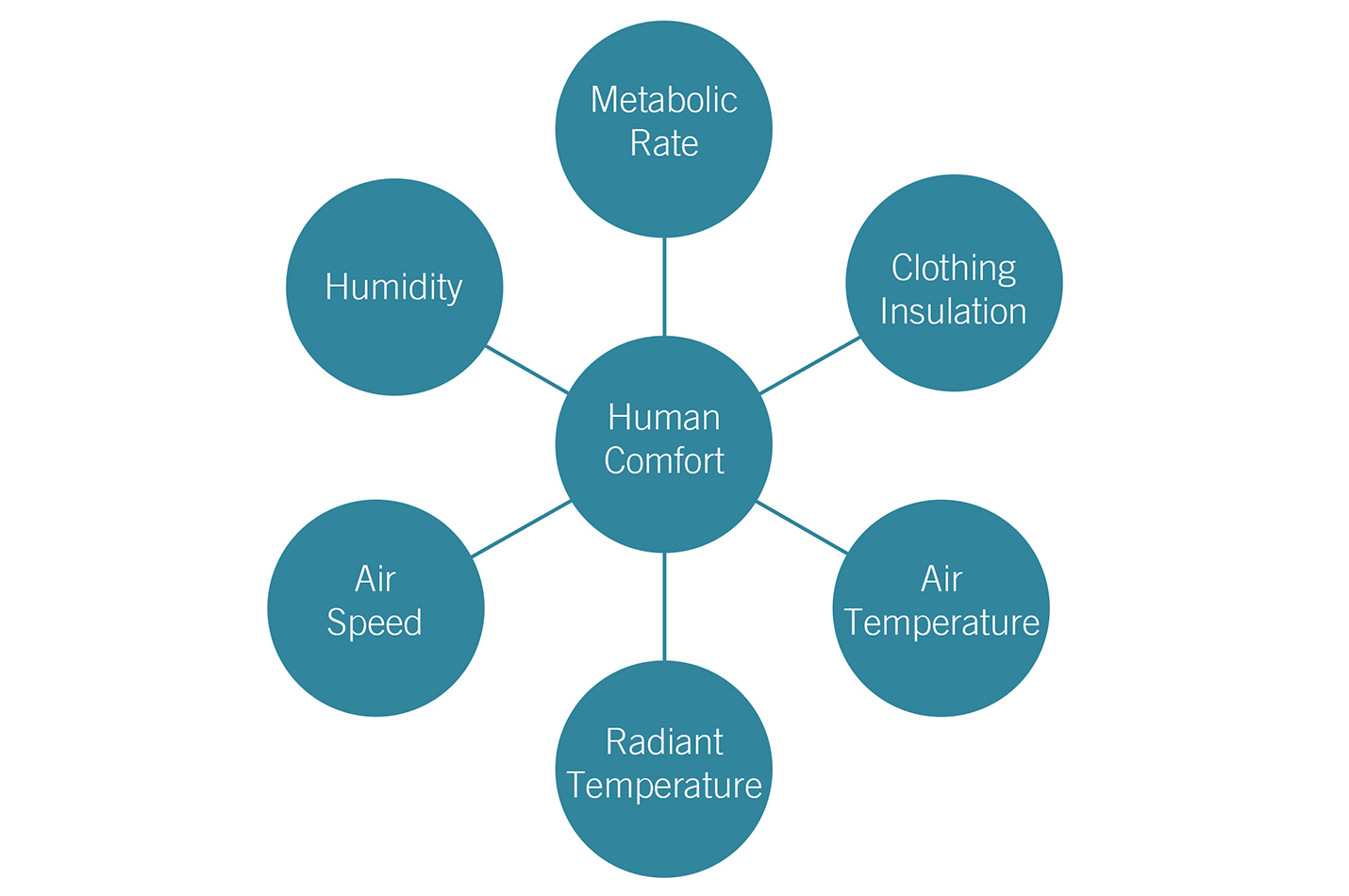Using thermal comfort strategies to stay cool
Summer is here and we’re all feeling the heat. Air conditioning will keep you cool, but comes at a price – it’s expensive to operate, and with the utility grids peaking in the summer, keeps our dirty coal-fired power plants cranking out electricity. Fortunately, there is much more to thermal comfort than the cold air an A/C can provide. Here’s a little primer about the six factors the American Society of Heating and Refrigeration (ASHRAE) considers in predicting thermal comfort and some suggestions for using these to keep cool:
Air Speed: Moving air transport heat and moisture off of your body more effectively than still air. Just a 2-1/2 MPH breeze can make air feel up to 7 or 8˚F cooler. So get a fan and let it blow your blues away.
Radiant Temperature: If you ignore air movement, the temperature you feel in a space is actually the average of the air temperature and the temperature of the surfaces surrounding you. Amongst mechanical engineers, we call this a space’s “operative temperature.” It’s a big part of the reason a basement feels so cool compared to the rest of a house. Basement floors and walls stay cool because they are concrete with tons of thermal mass and a direct connection to the ground, which is stays about 55˚F all year. If you’re lucky enough to have a basement, camp out there and enjoy the lower operative temperature.
Clothing Insulation: Our office has a reduced-clo policy on days when it is over 90˚F outside. What’s clo? It’s ASHRAE’s metric for clothing level. Sitting at my desk writing this in shorts, sandals, and a short sleeve shirt, I look casually fashionable and have a clo-level of only 0.36. Compare this to a clo-level 0.96 when I’m wearing my usual business suit and feeling strangled by my tie. The lower your clo-level, the more you will feel comfortable. So dress-down at work or at home when the temperatures really start to rise. Just check with HR first to make sure you don’t go too far.
Metabolic Rate: Here’s another ASHRAE metric: 1 “met” = a typical person’s metabolic rate when seating, reading, or writing. Stand up, and your met-level increase to 1.2. Walk around and you’re at about 2 met. The higher the met-level, the cooler you will want it. Try to plan your active work for the cooler parts of the day.
Humidity: We all know that the heat in the Pacific Northwest is a dry-heat. It turns out that’s actually an important factor in feeling comfortable. When air is very humid, your body can’t evaporate seat as effectively and therefore can’t shed heat as quickly. There’s not much we can do about humidity without resorting to A/C, but fortunately it’s not usually an issue in our climate.
Lastly (and not least — but not most either), Air Temperature: Yes, the reading on your home or office’s T-stat has an impact on thermal comfort. A temperature sensor displays what we call “dry-bulb” temperature and is the thing that almost everyone thinks of as the primary (and maybe only) factor of thermal comfort. It’s important and it plays a roll, but it’s not the only factor.
Finally, my favorite, non-ASHRAE acknowledged way to keep cool: grab a swimsuit and go play in one of our beautiful northwest rivers, you’ll stay cool and have a great time while you’re at it!



